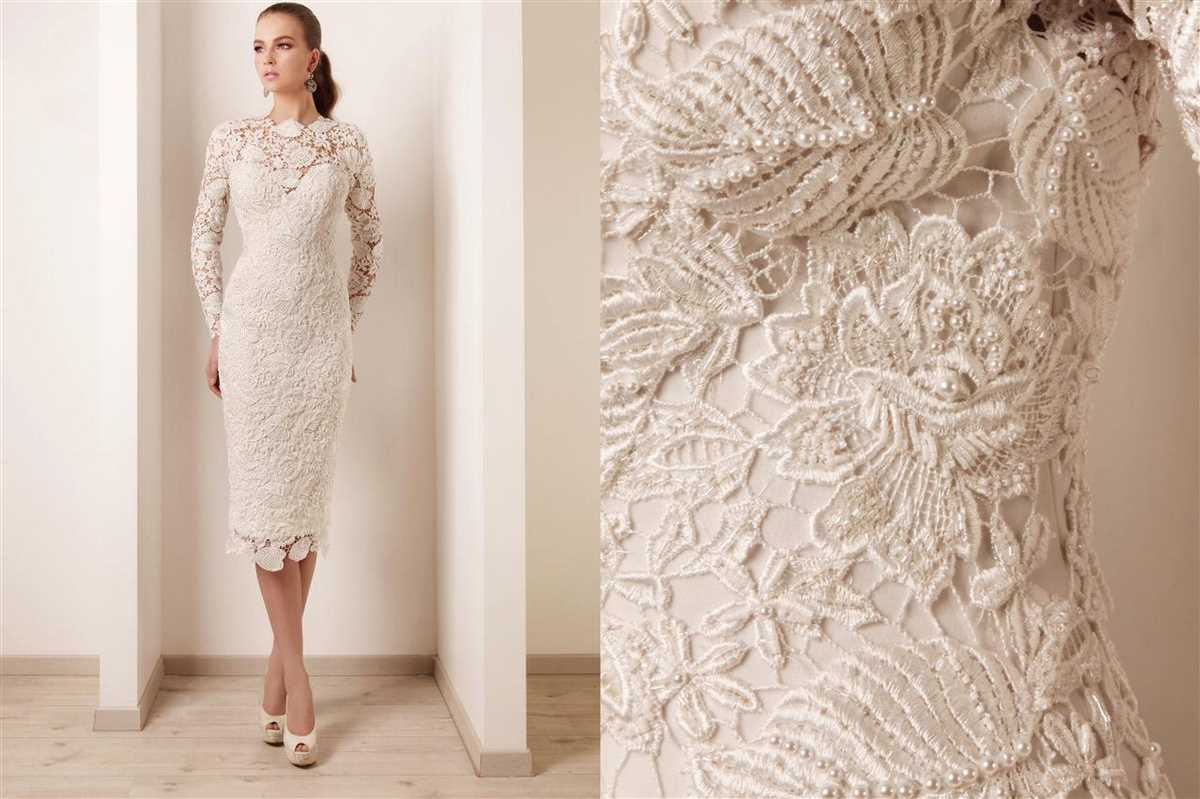
Weddings are a magical time filled with love, joy, and celebration. Every bride wants to feel special on her big day, and what better way to achieve that than by wearing a unique and one-of-a-kind wedding gown? Knitted wedding gowns have become increasingly popular in recent years, and for good reason. Not only are they a stunning and unconventional choice, but they also allow for endless customization and personalization.
Knitted wedding gowns offer brides the opportunity to showcase their individual style and personality. Whether you prefer a classic and elegant design or a more modern and eclectic look, there is a knitted gown pattern out there to suit your taste. The versatility of knitting allows for intricate lace designs, delicate embellishments, and stunning silhouettes.
One of the great advantages of choosing a knitted wedding gown is the ability to create a truly unique piece. Knitters can incorporate special touches like beads, sequins, or even hand-dyed yarns to make their gown stand out from the rest. Additionally, knitted gowns can be easily tailored to fit the bride’s body perfectly, ensuring comfort and confidence throughout the day.
Knitted Wedding Gown Pattern
Making your own wedding gown can be a unique and personal way to add a special touch to your big day. For brides who love to knit, a knitted wedding gown pattern offers a beautiful and creative option. With just a few essential knitting skills and some patience, you can create a stunning gown that will truly stand out.
When choosing a knitted wedding gown pattern, it’s important to consider the style and design that you want. There are various patterns available, from more traditional and classic styles to modern and contemporary designs. Take the time to browse through different patterns and find one that suits your personal taste and vision for your wedding day.
Materials:
- Fine laceweight yarn in the color of your choice
- Knitting needles in the appropriate size for your yarn
- Stitch markers
- Tape measure
- Scissors
- Sewing needle and thread
Instructions:
- Start by taking accurate measurements of your bust, waist, hips, and desired length for the gown. Use these measurements to determine the size you need to knit.
- Choose a lace pattern that you love and that fits the style of your wedding gown. Make a gauge swatch to ensure that your stitch count matches the pattern’s gauge.
- Cast on the required number of stitches and begin knitting the body of your gown, following the pattern instructions. Pay attention to shaping and any special stitch instructions.
- Once the body is complete, move on to knitting the sleeves. Again, follow the pattern instructions and make any necessary adjustments to ensure a perfect fit.
- Join the body and sleeves together, either by sewing or by using a grafting technique. Make sure to try on the gown as you go to ensure a proper fit.
- Continue knitting any additional details, such as a neckline or train, according to the pattern. Remember to block your finished gown before wearing it to your wedding day.
A knitted wedding gown can be a labor of love, but the end result is a truly unique and special garment that you can cherish for years to come. Whether you choose a simple and elegant design or a more intricate and detailed pattern, your knitted wedding gown will be a beautiful reflection of your personal style on your big day.
Choosing the Right Yarn for Your Knitted Wedding Gown
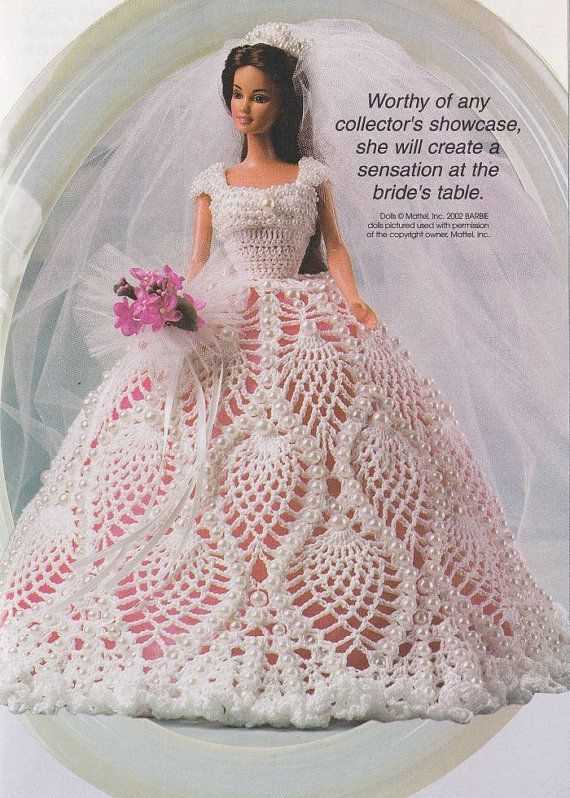
When it comes to knitting your own wedding gown, there are few decisions as important as choosing the right yarn. The yarn you select will determine not only the look and texture of your dress, but also how comfortable it is to wear on your big day. With so many options available, it’s essential to consider a few key factors before making your final choice.
Fiber Composition: The first thing to consider when selecting yarn for your wedding gown is the fiber composition. Natural fibers such as silk, cotton, and wool are popular choices for bridal wear due to their luxurious feel and breathability. Silk yarns can add a touch of elegance and drape to your gown, while cotton and wool blends can provide warmth and structure. It is important to choose a fiber that suits both your personal style and the climate of your wedding location.
Weight and Texture: The weight and texture of the yarn are also crucial considerations. A lightweight yarn will create a delicate and airy dress, perfect for a spring or summer wedding. On the other hand, a heavier yarn can add warmth and structure, making it suitable for a winter or fall wedding. Additionally, the texture of the yarn will affect the overall appearance of your gown. Consider whether you prefer a smooth and sleek finish, or if you’d like to add some texture and dimension to your dress.
Color and Dyeing: When selecting yarn for your wedding gown, you should also consider the color and dyeing process. Opting for a natural, undyed yarn can create a timeless and elegant look. Alternatively, you may choose a dyed yarn in a shade that complements your wedding theme or personal style. Keep in mind that natural fibers can often be dyed easily, whereas synthetic fibers may require specialized techniques.
Availability and Cost: Finally, it’s essential to consider the availability and cost of the yarn you choose. Some specialty yarns may be harder to find or more expensive, so it’s important to consider your budget and plan accordingly. If you have a specific brand or type of yarn in mind, it may be wise to start your search early or consider ordering online to ensure you can obtain the necessary quantity.
Taking the time to carefully select the right yarn for your knitted wedding gown will ensure that you create a garment that not only looks beautiful but feels comfortable to wear on your special day. By considering factors such as fiber composition, weight and texture, color and dyeing, as well as availability and cost, you can make an informed decision that brings your knitting project to life.
Essential Tools for Knitting a Wedding Gown
When it comes to knitting a wedding gown, having the right tools is essential. Knitting a gown is a complex and time-consuming project that requires precision and attention to detail. Here are some of the essential tools you will need to successfully knit a wedding gown:
1. Knitting Needles:
High-quality knitting needles are a must-have for any knitting project, especially when it comes to knitting a wedding gown. Choose needles that are the right size for your yarn and that feel comfortable in your hands. Look for needles that are sharp and have a smooth finish to ensure smooth and even stitches.
2. Stitch Markers:
Stitch markers are essential for keeping track of your stitches and patterns while knitting a wedding gown. They help you mark key points in your pattern, such as when to increase or decrease stitches, and can be easily moved as you progress through your project. Using stitch markers will help you avoid mistakes and ensure your stitches are aligned correctly.
3. Yarn:
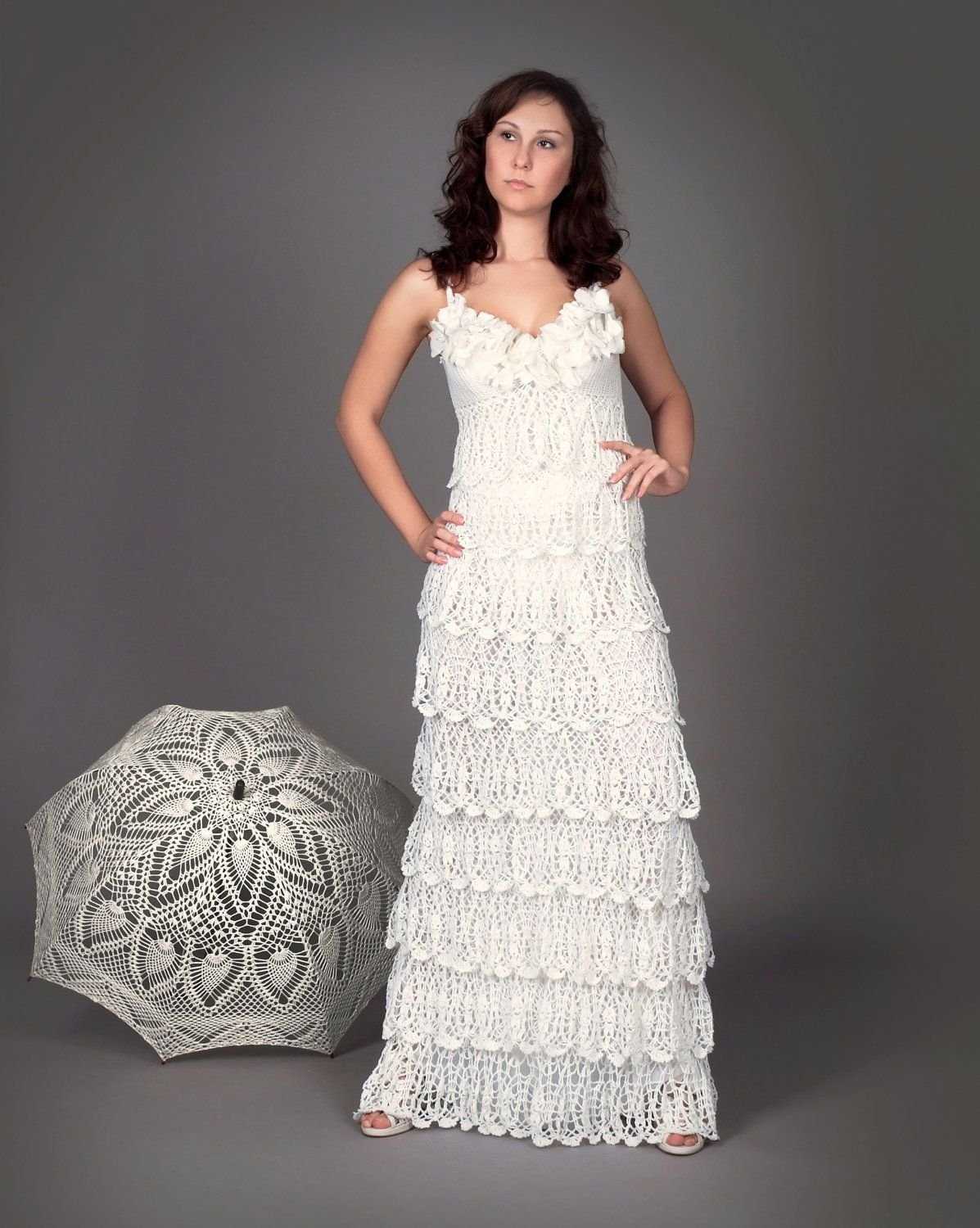
Choosing the right yarn for your wedding gown is crucial. Opt for a high-quality yarn that is soft, lightweight, and has a beautiful drape. Consider the season and venue of the wedding when selecting the yarn and choose a color that complements the bride’s style. It’s also important to estimate the amount of yarn you will need for the entire project to avoid running out in the middle of knitting.
4. Pattern:
Having a detailed and well-written pattern is essential for knitting a wedding gown. Look for a pattern specifically designed for wedding gowns and make sure it includes all the necessary instructions, stitch counts, and measurements. Take the time to read through the pattern thoroughly before beginning your project to ensure you understand the steps and techniques involved.
5. Blocking Tools:
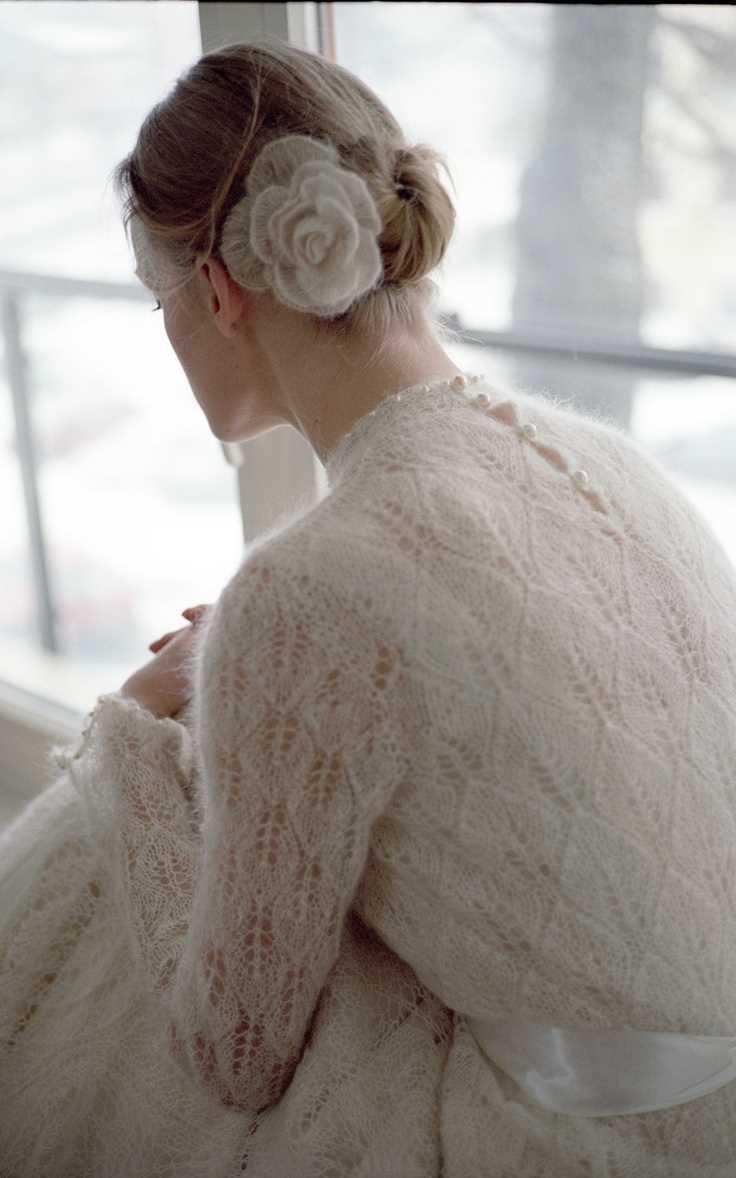
Blocking tools are essential for giving your knitted wedding gown its final shape and structure. You will need blocking mats or boards, stainless steel blocking pins, and a spray bottle for wet blocking. Blocking helps even out your stitches, open up lace patterns, and give your gown a professional finish.
Knitting a wedding gown is a labor of love that requires skill, patience, and the right tools. With the proper tools and attention to detail, you can create a stunning and unique gown that will be cherished for years to come. Remember to take your time, enjoy the process, and seek help or guidance if needed.
Knitting Techniques to Master for Your Wedding Gown
When it comes to knitting your own wedding gown, mastering various knitting techniques is essential to ensure a beautiful and impeccably crafted garment. Whether you’re a beginner or an experienced knitter, there are several techniques that can elevate your skills and help you create a stunning dress for your special day.
Lace Knitting
One of the most popular techniques for wedding gowns is lace knitting. This delicate and intricate stitch pattern creates a romantic and elegant look that is perfect for a bridal dress. Lace patterns can range from simple eyelets to complex motifs, and mastering the technique will allow you to incorporate unique and personalized designs into your gown. By learning different lace knitting stitches and techniques, you can add exquisite details and create a timeless and sophisticated wedding dress.
Seamless Knitting
Seamless knitting is another important technique to master when creating a wedding gown. The absence of seams not only adds comfort to the dress but also gives it a seamless and smooth appearance. By utilizing techniques such as circular knitting and knitting in the round, you can seamlessly construct the various parts of the gown, including the bodice, skirt, and sleeves. Seamless knitting also allows for easy adjustments and alterations, ensuring a perfect fit for your special day.
Beading and Embellishments
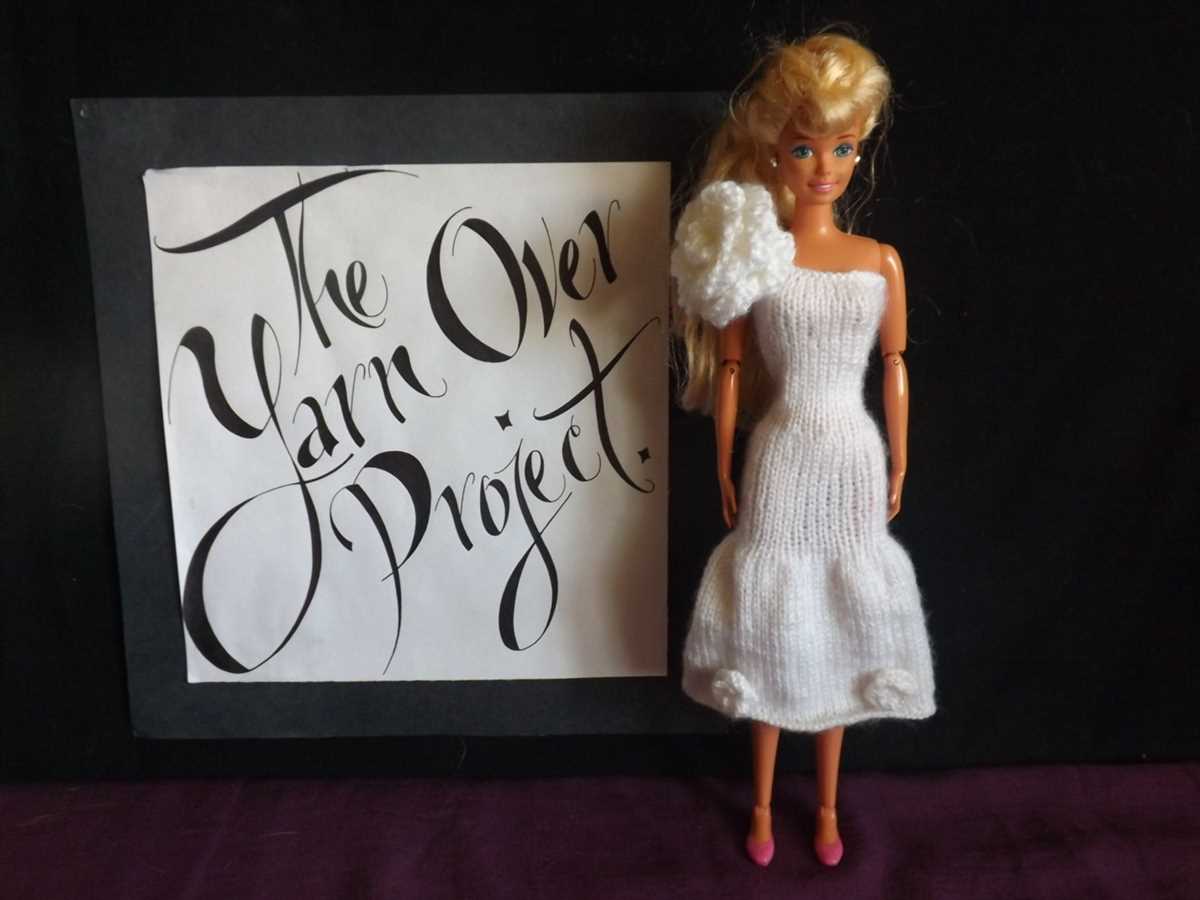
To add a touch of glamour and sparkle to your wedding gown, mastering beading and embellishment techniques is crucial. Whether you choose to incorporate beads, sequins, or crystals, these embellishments can elevate the overall look of the dress and make it truly unique. Techniques such as stranded beading, surface embroidery, or knitting with beads can be used to add intricate and eye-catching details to your wedding gown. Mastering these techniques will allow you to create a dress that reflects your personal style and enhances your overall bridal look.
Advanced Stitch Patterns
For those who are more experienced knitters, mastering advanced stitch patterns can take your wedding gown to the next level. Techniques such as cables, lace panels, or colorwork can add texture and visual interest to your dress. These complex stitch patterns require attention to detail and precision, but the result is a stunning and intricately designed gown that showcases your knitting skills. Incorporating advanced stitch patterns will not only make your wedding gown stand out but also provide a unique and personal touch to your special day.
How to Take Measurements for a Knitted Wedding Gown
Before starting the knitting process for your wedding gown, it is crucial to take accurate measurements of your body to ensure a perfect fit. Here are the steps to follow in order to obtain the necessary measurements:
1. Bust Measurement:
First, wrap the measuring tape around the fullest part of your bust, ensuring that the tape is level all the way around. Take note of the measurement in inches or centimeters.
2. Waist Measurement:
Next, locate your natural waistline, which is usually the narrowest part of your torso. Wrap the measuring tape around this area, making sure it is snug but not tight. Record the measurement.
3. Hip Measurement:
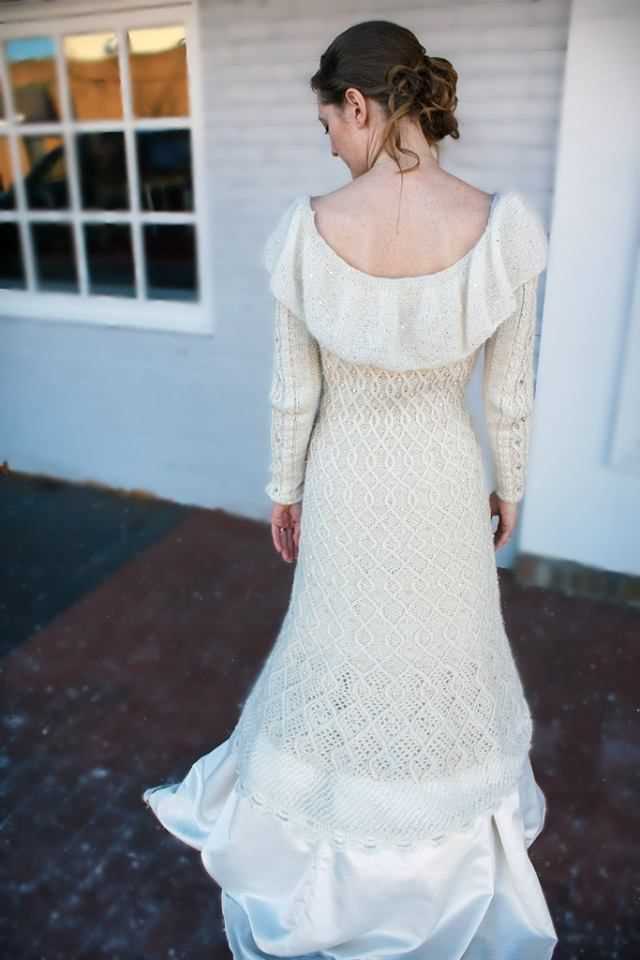
To measure your hips, place the tape measure around the widest part of your hip area. Ensure that the tape is parallel to the ground and not too tight. Note down the measurement.
4. Length Measurements:
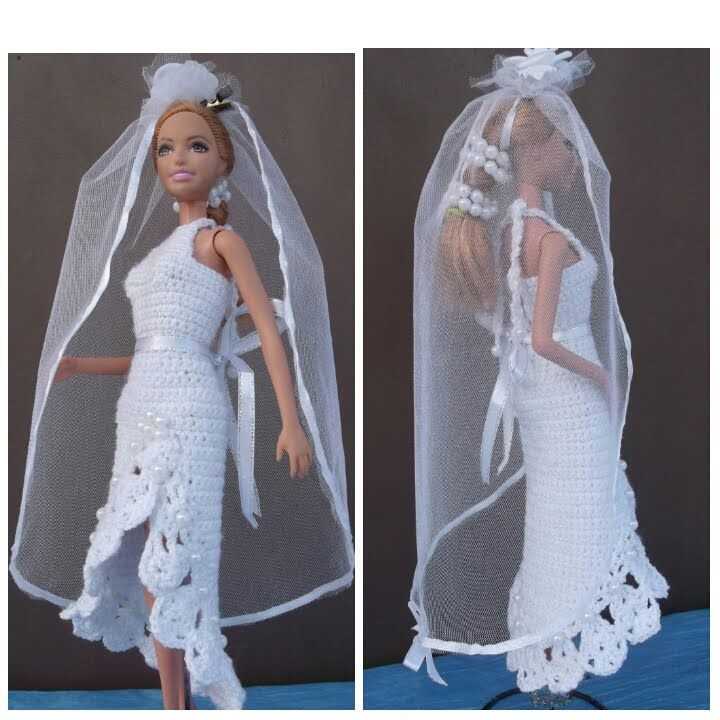
For the length measurements, you will need the help of a friend or a trusted tailor. Stand upright with your feet together and let your helper measure from the base of your neck to the desired length for your gown. This measurement will vary depending on whether you want a floor-length or a tea-length gown.
Once you have taken these key measurements, you will have a solid foundation to start knitting your wedding gown pattern. Make sure to double-check all measurements and adjust as needed to ensure the best possible fit for your special day.
Creating a Swatch for Your Knitted Wedding Gown
When it comes to knitting a wedding gown, one of the most important steps is creating a swatch. A swatch is a small test piece that allows you to gauge your knitting tension and ensure that your gown will fit perfectly. This is especially crucial for a project as important as a wedding gown, where every stitch counts.
To create a swatch for your knitted wedding gown, start by selecting the same yarn and needles that you plan to use for the actual gown. This will give you an accurate representation of how your stitches will look and how the fabric will drape. It’s important to use the exact same materials, as different yarns and needles can produce significantly different results.
Begin by casting on a few stitches, using the same technique and tension that you plan to use for the gown. Knit a few rows, making sure to maintain consistent tension throughout. This will allow you to see how the stitches look in your chosen yarn and gauge if any adjustments need to be made.
After completing a few rows, measure the width and height of your swatch. This will help you determine your stitch and row gauge, which is crucial for ensuring that your gown will fit properly. If your gauge does not match the specified measurements in the pattern, you may need to adjust your needle size or tension to achieve the desired results.
Creating a swatch may seem like an extra step, but it can save you a lot of time and frustration in the long run. It allows you to practice your knitting technique, ensure that your chosen yarn and needles are suitable, and make any necessary adjustments before starting on the actual gown. So take the time to create a swatch and set yourself up for knitting success!
Understanding Pattern Instructions for a Knitted Wedding Gown
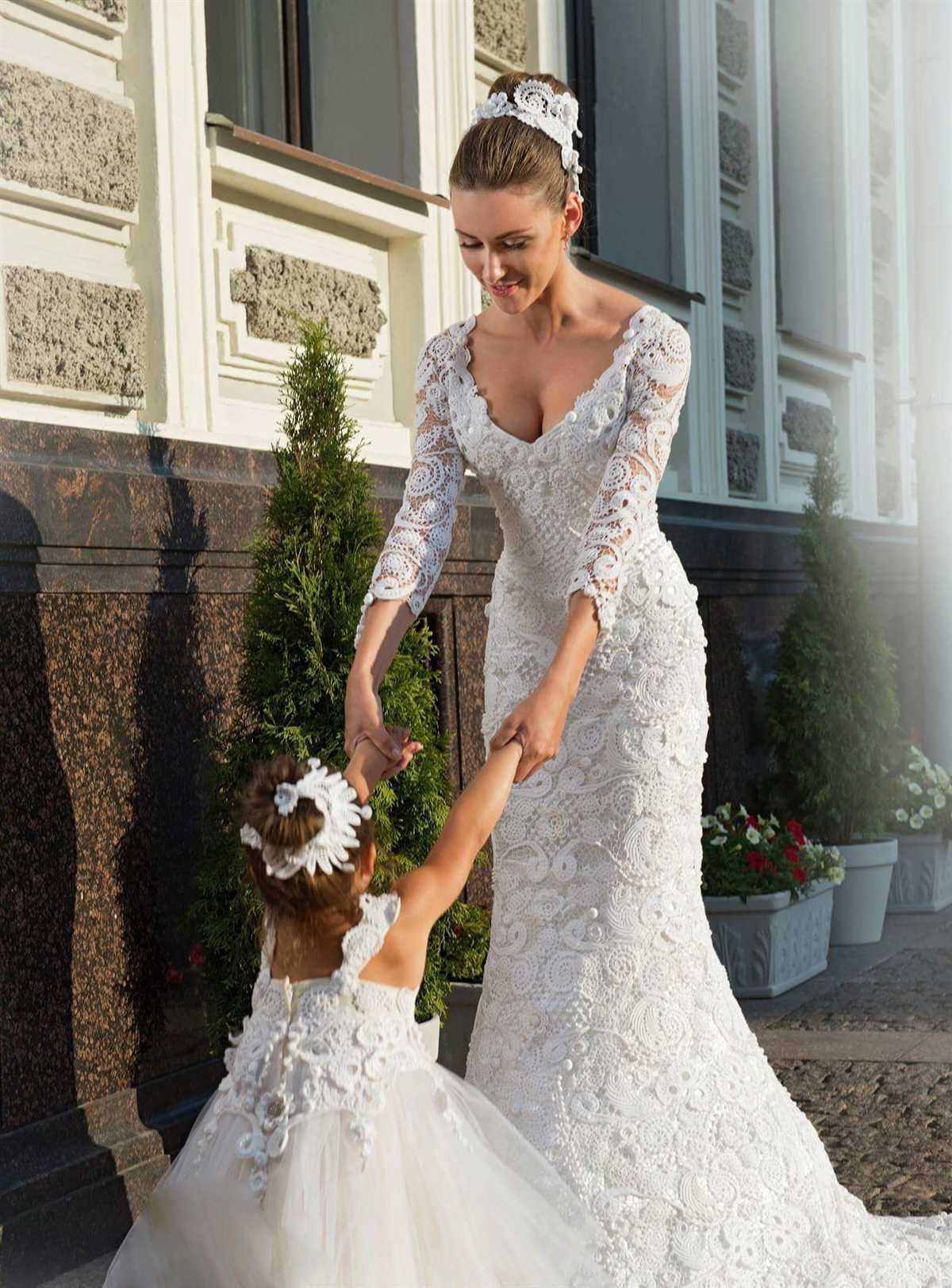
When embarking on the project of knitting a wedding gown, it is important to have a clear understanding of the pattern instructions. These instructions serve as a guide for creating the intricate design and structure of the gown. By following the pattern carefully, you can ensure that the final result is a beautifully crafted piece that is tailored to your measurements and preferences.
1. Reading the Instructions: Begin by thoroughly reading the pattern instructions from start to finish. Pay close attention to any special abbreviations, symbols, or techniques that may be used. This will give you an overall understanding of the project and help you anticipate any challenges or adjustments that may be required.
2. Taking Accurate Measurements: Before starting the project, take accurate measurements of the bride’s body to ensure a proper fit. The pattern instructions will often include a size chart and suggest which size to choose based on these measurements. Take the time to measure carefully and consult the pattern’s sizing recommendations.
3. Breaking Down the Steps: Once you have a grasp of the overall design and sizing, it’s important to break down the pattern instructions into smaller, manageable steps. This can be done by highlighting or underlining important sections, jotting down notes, or creating a separate checklist to keep track of your progress. Breaking down the steps will make the project feel less overwhelming and help you stay organized.
4. Following the Pattern Stitch by Stitch: As you begin knitting, follow the pattern instructions stitch by stitch. This means carefully executing each row as described in the pattern, including any increases, decreases, or stitch variations. By paying close attention to the instructions and comparing your work to the pattern as you go, you can ensure that your knitting stays true to the intended design.
5. Seeking Help When Needed: If you encounter any difficulties or have questions about the pattern instructions, do not hesitate to seek help. There are knitting communities online, as well as local yarn stores, where experienced knitters can offer guidance and support. It’s always better to ask for clarification or assistance rather than risk making a mistake that could unravel hours of work.
By understanding and following the pattern instructions for a knitted wedding gown, you can embark on a rewarding project that results in a beautiful and personalized garment for the bride’s special day. Remember to take your time, stay organized, and seek help when needed. Happy knitting!
Knitting the Bodice of Your Wedding Gown
When it comes to knitting your own wedding gown, the bodice is one of the most important parts of the dress. It sets the tone for the entire garment and determines the fit and style. There are several patterns available for knitted wedding gown bodices, each with its own unique design and construction.
Choosing the Right Pattern: Before you start knitting the bodice of your wedding gown, it’s important to choose a pattern that suits your style and skill level. Look for patterns that have clear instructions and detailed charts or diagrams to help guide you through the process. Consider the type of stitch pattern you want to use, whether it be lace, cables, or a simple textured stitch.
Materials and Gauge:
Once you have chosen a pattern, it’s time to gather your materials. For the bodice of a wedding gown, it’s best to use a lightweight and luxurious yarn, such as silk or merino wool. Be sure to check the recommended gauge in the pattern and make a gauge swatch to ensure your stitches align with the pattern’s instructions. Adjust your needle size as needed to achieve the correct gauge.
Construction and Fit: Knitted wedding gown bodices can be constructed in a variety of ways, including from the top down, bottom up, or in separate sections that are sewn together. Pay close attention to the pattern instructions to ensure you understand how the bodice is constructed and how it will fit on your body. Take accurate body measurements and consider making alterations to the pattern if needed to achieve your desired fit.
- Increments of Fitting: It’s important to create increments of fitting throughout the bodice to ensure it hugs your body in all the right places. This can be accomplished through shaping techniques such as increasing or decreasing stitches strategically at certain points.
- Adjustments for Comfort: Keep in mind that the bodice of a wedding gown needs to be not only beautiful but also comfortable to wear for an extended period of time. Consider adding a lining or inserts for added comfort, and be sure to choose a yarn that feels good against your skin.
Finishing Touches: Once you have completed the bodice of your knitted wedding gown, it’s time to add any finishing touches, such as buttons, beads, or embroidery. These small details can elevate the overall look of the gown and make it truly unique to you.
In conclusion, knitting the bodice of your wedding gown requires careful consideration of pattern selection, materials, construction techniques, and fit. With the right approach and attention to detail, you can create a stunning and personalized garment that will make you feel beautiful and confident on your special day.
Knitting the Skirt and Train of Your Wedding Gown
When it comes to knitting your own wedding gown, the skirt and train are two important elements that require careful attention and planning. The skirt is what gives the gown its fullness and shape, while the train adds elegance and drama. Here are some tips to help you knit these parts of your gown to perfection.
Choosing the right yarn: To create a beautiful skirt and train, it’s important to select a yarn that drapes well and has a nice weight to it. Look for yarns that have a soft, luxurious feel and a good amount of drape. Consider using a blend of natural fibers like silk or alpaca, which will add a touch of elegance to your gown.
Creating the skirt: The skirt of your wedding gown can be knitted in various styles, depending on your personal preference. You can opt for a classic A-line silhouette, a flowing and romantic flared skirt, or even a fitted mermaid-style skirt. Whatever style you choose, make sure to carefully measure your waist and hips to ensure a perfect fit.
Knitting the train: The train of your gown is what creates that stunning, sweeping effect as you walk down the aisle. It should be long enough to make a statement, but not so long that it becomes cumbersome. Consider using a lace or cable pattern for the train to add texture and interest. Knit it separately from the skirt and attach it to the back of the gown, making sure to secure it firmly to prevent any mishaps on your big day.
Overall, knitting the skirt and train of your wedding gown requires patience and attention to detail. Take the time to swatch and test different stitch patterns to ensure you achieve the desired look. And most importantly, enjoy the process of creating a one-of-a-kind gown that will make you feel beautiful and special on your wedding day.
Finishing Touches: Embellishments for Your Knitted Wedding Gown
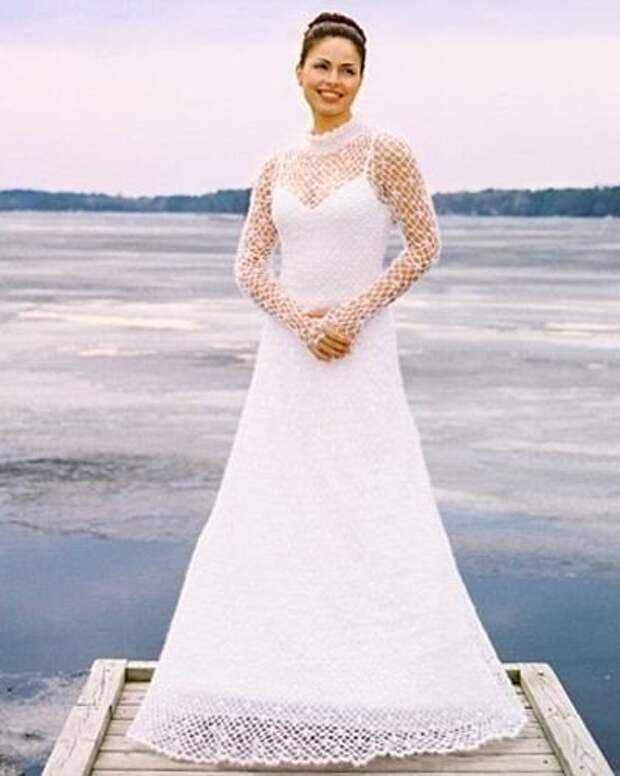
Your knitted wedding gown is a labor of love, and adding embellishments can be the perfect way to make it even more special. Whether you want to add a touch of sparkle or a delicate feminine touch, there are many options to choose from. Here are some ideas for embellishments that will elevate your knitted wedding gown to the next level.
1. Lace
Lace is a classic choice for adding elegance and romance to any wedding gown, and it can be incorporated into your knitted gown in various ways. You can knit lace panels or motifs and sew them onto the gown, or you can add a lace trim along the neckline, sleeves, or hemline. The delicate, intricate patterns of lace will add a touch of timeless beauty to your knitted wedding gown.
2. Beading and Sequins
If you want to add some sparkle and glamour to your knitted wedding gown, consider incorporating beads or sequins. You can sew them onto the gown individually to create a scattered effect, or you can create intricate beadwork or sequin patterns. These embellishments can be added to the bodice, waistline, or any other part of the gown that you want to highlight.
3. Ribbon and Bow Details
Ribbon and bow details can add a whimsical and feminine touch to your knitted wedding gown. You can add a ribbon belt to cinch in the waist, or you can create bows to adorn the shoulders or back of the gown. These small details can make a big impact and add a charming finish to your knitted wedding gown.
4. Embroidery
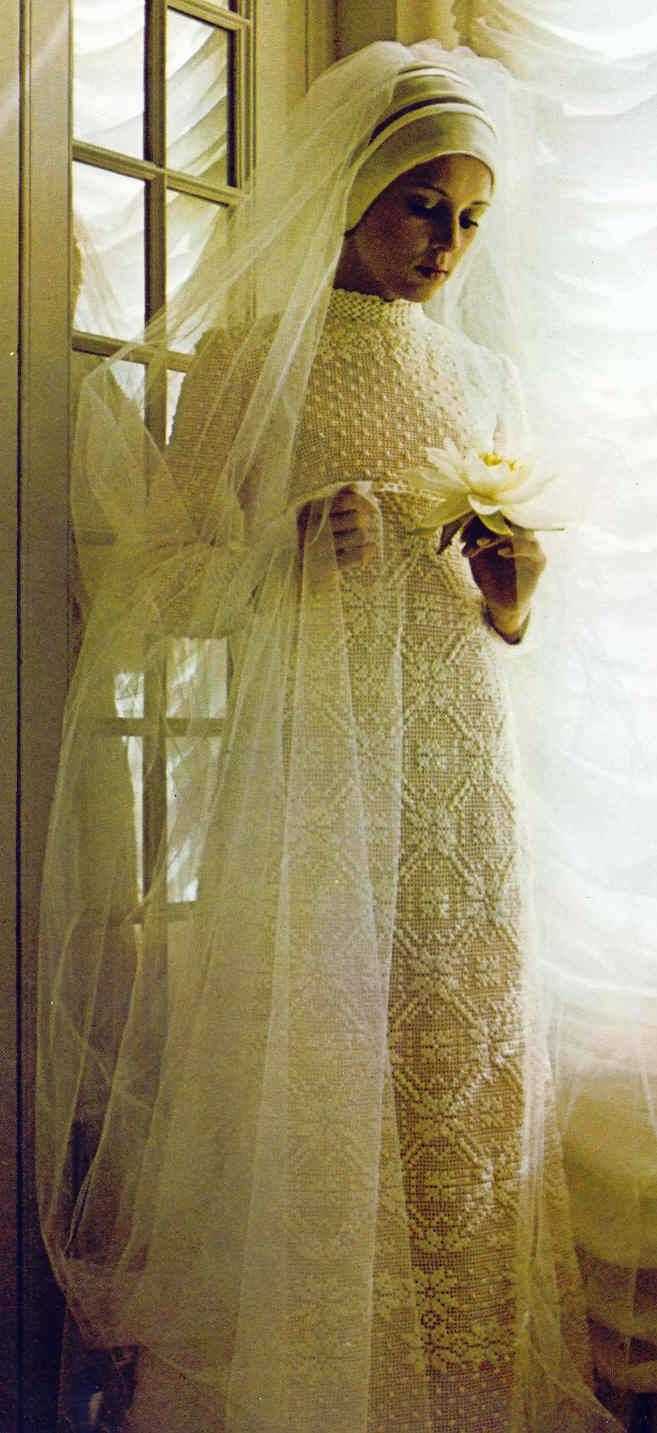
If you are skilled in embroidery or willing to learn, adding embroidered details to your knitted wedding gown can create a truly unique and personalized look. You can choose a simple monogram, a delicate floral pattern, or even incorporate meaningful symbols or motifs that represent your love story. Embroidery can be added to specific areas of the gown, such as the bodice or sleeves, or it can be used to create an all-over pattern.
5. Appliques
Appliques are a great way to add texture and dimension to your knitted wedding gown. You can create or purchase knitted or crocheted appliques and sew them onto the gown in strategic places, such as the shoulders, neckline, or skirt. Appliques can be in the form of flowers, leaves, or any other design that complements the style of your gown.
Adding embellishments to your knitted wedding gown can take it from beautiful to breathtaking. You can choose one or a combination of these embellishments to create a gown that is truly unique and reflects your personal style. Whether you opt for lace, beading, ribbon, embroidery, or appliques, your finished knitted wedding gown will be a one-of-a-kind masterpiece that you can cherish for a lifetime.
Tips for Altering the Knitted Wedding Gown Pattern to Fit
When it comes to knitting a wedding gown, finding the perfect fit is crucial. Altering a knitted wedding gown pattern to fit your measurements can be a challenging task, but with the right tips and techniques, it can be achieved. Here are some helpful tips to ensure that your knitted wedding gown fits you perfectly:
- Take accurate measurements: Before starting your project, take detailed measurements of your bust, waist, hips, and other relevant areas. Compare these measurements with the pattern’s size chart to determine the best size to start with.
- Make gauge swatches: To ensure the accuracy of your knitting and achieve the correct size, make gauge swatches using the recommended yarn and needle size. Adjust your needle size if necessary to match the pattern’s gauge.
- Alter the pattern: If the pattern does not provide instructions for different sizes or if you want to make further adjustments, you may need to alter the pattern. This can involve adding or subtracting stitches, increasing or decreasing the length, or modifying the shaping of the garment.
- Consider using a lifeline: When making significant alterations to the pattern, it can be helpful to insert a lifeline at a certain point in your knitting. This allows you to easily go back to that point if you need to make any adjustments or corrections.
- Try on as you go: As you progress with your knitting, try on the gown regularly to ensure that it fits well and to make any necessary adjustments along the way. This can help prevent any major fit issues later on.
- Consult with an experienced knitter: If you are new to knitting or unsure about altering patterns, it can be beneficial to seek advice from an experienced knitter or attend a knitting class. They can provide guidance and help you troubleshoot any issues that may arise.
In conclusion, altering a knitted wedding gown pattern to fit requires careful planning, accurate measurements, and skillful adjustments. By following these tips and techniques, you can create a stunning wedding gown that fits you perfectly and showcases your knitting skills.